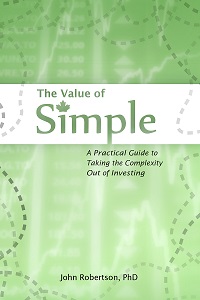It was not a good week for the diet, as my love of candy and deals conspired with the arrival of half-price Halloween candy. Combined with more than a few all-nighters as I struggle to make timely progress on that thesis thing, and the end result is that I’ve gained back all the weight I lost at fat camp the Turkish conference.
The Ontario government just came out with a lucrative scholarship program… for foreign students. At $40k/year, it is a very rich scholarship indeed. For comparison, the next-best provincial scholarship is the OGS program at $15k/year (which foreign students are also eligible for). I’m not opposed to the government trying to recruit foreign students, but I don’t think a program that’s nearly three times as lucrative as what’s out there now should be exclusive to foreign students… why not allow Canadian students at Ontario schools to compete side-by-side, as with the OGS? Don’t we want to recruit the best students period to Ontario universities, no matter whether they’re from Ontario, the rest of Canada, or a foreign nation? Plus there’s always the issue with foreign students that we may be putting out the money to educate them, just to have them take that investment back to their home country when they graduate. A better program for getting talent to Canada may be the other Ontario initiative of late, allowing master’s students to apply for permanent residency without needing a job offer.
Canadian Capitalist embedded a good lecture about index investing in his latest wrap-up post. One of the minor points made was that index investing doesn’t make for good newspaper or magazine articles, so there’s a whole industry that has an interest in reporting on active management. I have to say it’s the same for bloggers — though I do index a large part of my portfolio, I only ever seem to talk about the stock picking side.
The Globe has a short article about Toronto’s condo market. True to form, I will pick out parts, and then proceed to spread fear. “Insiders suggest that, in some areas, investors accounted for up to 60 per cent of sales in those newly launched projects and with about 4,000 new suites coming to market, the impact was indeed profound.” Yowzah, on one hand, that’s a lot of investors. On the other hand, why aren’t the other 40% also investors given the issues with pre-construction? Anyhow, what I found even more alarming: “So what drove investors to […] plunge back into the market? The chief factor […] was price. Believe it or not, the index price for condos actually dropped $14,608 in September from August to stand at $410,730. Bit of smoke and mirrors really. Average price per square foot stayed nearly constant at around $493. The price drop came from builders creating smaller suites – about 831 square feet or 10 per cent smaller than August.” I’m already appalled by how small the new condos around are. Granted, I like my space and my stuff (after all, right now I’m filling a small 2-bedroom apartment all by me onesies), but I don’t think that this is going to go well for people when the units are actually built at some indeterminate point in the future and find out how small 10% smaller than “already too small” is. Plus of course, the implication that even “investors” are getting priced out of the market.
Speaking of being a housing bear, MoneySense has an article on Canada’s housing market online now. It’s 4 pages, because of course putting it all in one or two wouldn’t fit on the internet. As you can probably guess, I agree most with the advice about just simply waiting longer if you don’t already own a home — even most of the bulls don’t think the market’s going to run away from you, so there’s no rush. I agree least with the advice about shorting the banks or home furnishing companies to hedge against a falling market. While I can totally see the logic behind the banks doing poorly if the housing market goes down, it’s a dangerous trade to get into, which kind of goes against the idea of hedging your housing exposure.
Even the CREA is now calling for activity and prices to decline next year.
All that negativity out of the way for the Canadian side, if you haven’t been paying attention to the foreclosure crisis in the States (and it’s always a “crisis” these days), then you should be. Yes, it’s another example of just how deep into the lake of batshit crazy the US system went — which doesn’t help my recurring theme — but it’s just insane that these companies are basically stealing houses. Foreclosing on houses without mortgages even. Even when a house should be foreclosed on, they’re not engaging in the proper notice procedures, which would give people the chance to defend themselves, or at least move out (there was one case of a locksmith showing up to lock the person being foreclosed on in the house; they didn’t even check if the house was empty before changing the locks!). Barry Ritholtz has been providing good summaries of the stories as they come out, including this one about the process servers lying in their affidavits that testify that they did indeed serve notices to the homeowners. Cases are coming to light where that is demonstrably false, including some where people have visa stamps in their passports that prove they were out of the country when the alleged serving took place.
Like Netbug, I played Force Unleashed 2 and found it lacking. It was short, but moreover, kind of boring. I found the various large mech enemies annoying — while they could be killed in fairly traditional ways, you generally had to find a way to trigger their special quicktime event sequence death scene. If you didn’t, they were incredibly powerful. The regular stormtroopers were very weak (which I suppose is to be expected), and kind of fun to find new ways to kill them, but I also found some of the other enemies tough. The snipers in particular seemed to do way too much damage from way too far away, and the other force users were too good at defense. There was really no middle ground when it came to the opposition. In general I found that there was no technique or timing to the basic lightsabre attacks/combos, which did seem to be present in FU1 — this time around, just mash X until you get lucky and slip past their defenses. Also, every one of the other lightsaber-wielding enemies had two sabers. Come on, Lucas. And as to the length, it was not only a short game overall, but very poorly paced — it seemed like fully half the playtime was spent in that epic go-nowhere duel with Vader at the end. So, how short was it? Well, I didn’t time it, but I finished the game in a week. The same week I spent in all-night thesis sessions at the lab, with all my free time from two nights spent at curling. I had maybe 4 hours of playtime, mostly interrupted time at that, as I was mostly playing while dinner was in the oven, and then again for a bit as I was digesting before heading back to work…
Rogers is getting into the home security field. Interestingly enough, over 2 years ago I was part of a survey that was asking about how to brand and price a Rogers home security offering. I’m surprised that it took so long from that step to the roll-out. The paranoid part of me wonders if maybe it’s somehow deeply flawed.
An interesting science article in the Globe today as well about electrical stimulation improving math skills. The MSM article didn’t cite the publication, so here’s the abstract. When I read the Globe’s story, I thought they were talking about a direct electrical stimulation (i.e.: DBS), but it turns out to be a non-invasive transcranial stimulation. I’m surprised a weak, external, DC stimulation does anything at all. I’m going to have to read more on TDCS… some other time.
Canadian Dream (free at 45) is having a 1000th post contest, giving away a Kobo e-book reader.
Finally, a request of you: please suggest a topic for me to blog on. I feel like I may be getting stale railing against real estate, but at the same time it’s just so easy to do since these articles tend to get under my skin somehow. I’d like to blog more while thesising to keep the fingers moving (and hopefully the other writing muscles to get this thing done), but often feel just as blocked here as when staring at the flashing cursor in Word. Also, if anyone knows of a good easy-to-use captcha plug-in for WordPress 1.5 I’d be happy to try it, as the spam comments have been getting ridiculous lately (200/day and climbing!).


 Questrade: use QPass 356624159378948
Questrade: use QPass 356624159378948 Passiv is a tool that can connect to your Questrade account and make it easier to track and rebalance your portfolio, including the ability to make one-click trades.
Passiv is a tool that can connect to your Questrade account and make it easier to track and rebalance your portfolio, including the ability to make one-click trades.